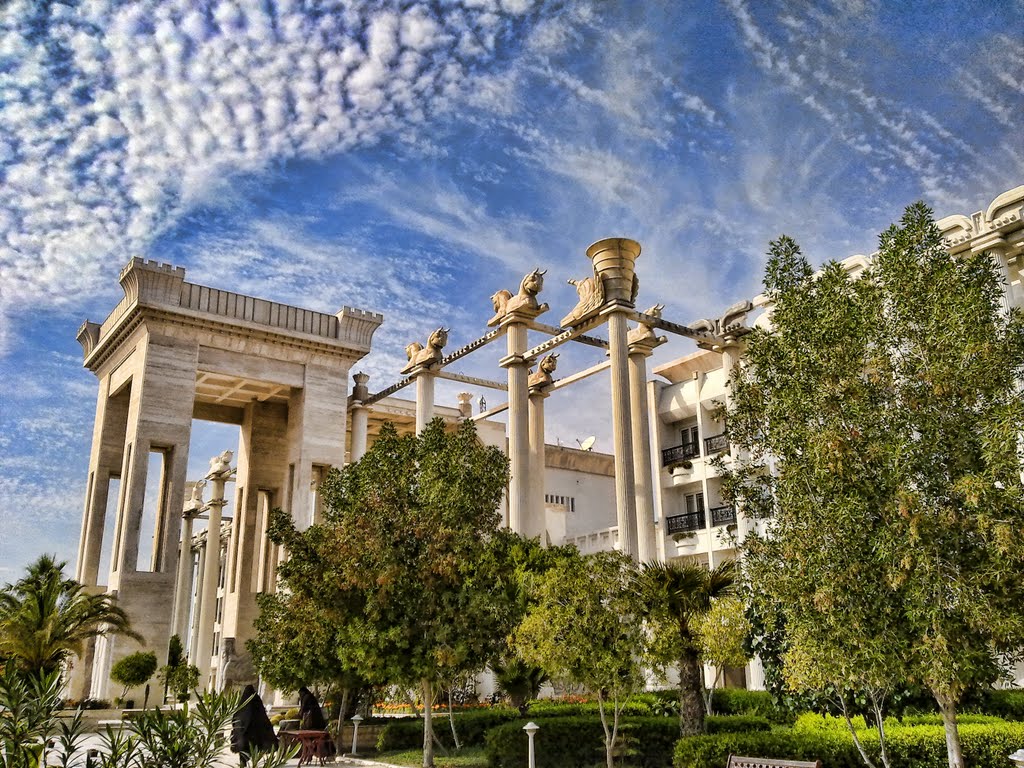For quite some time now tourism has become the center of attention of national policymakers as a major source of income to be focused on, apart from the oil sector. Positive views and approaches can be seen on the part of authorities both in the government and the parliament.
Tourism has been addressed among the 10 main subjects in Iran’s 6th Five-year Economic Development Plan (starting 2016). Growth in this industry has been even mentioned as a target to be reached in the country’s 20 year vision 2025 document, Donya-e Eghtesad reports.
Claiming the Share
According to the document, the share of Iran from the total number of world tourists should rise from 0.9% in 2004 (1383) to 1.5% in 2025 (1404); meaning 20 million tourists. Also in terms of income, Iran’s share of global tourism income needs to increase from 0.7% to 2% for the same period. Therefore the income earned from the tourism industry in 2025 should reach $25 billion.
Obtaining a 30% growth during the 6th Plan clearly calls for addressing issues such as: creating a balance between the number of tourists traveling to and from the country which are now respectively 700,000 and 2.9 million people, optimized use of the huge capacity of historical, cultural, and natural resources of the country, and finally renovation of dilapidated infrastructures of tourism, etc.
Investment
The document estimates that the tourism industry is in need of $11 billion (300,000 billion rials) investments. About $9 billion of the amount is to be allocated under the budget, and the rest will come from government credit lines.
On the other hand, the ministry of industry, mines and trade has developed a map for industry in 13 different sectors until the end of 2025. Based on the map and the evaluations, the total income of export in all 13 sectors should reach the maximum of $80 billion; the share of tourism in this income is estimated to be $10 billion, which would be on par with automobile and steel industries.
This is while the head of Iran Cultural Heritage and Tourism Organization, Masoud Soltani-far, had earlier mentioned this figure for Iran (2013) as $6 billion from the global total of $1250 billion.
Stability
In spite of all the positive and supportive statements and agreements that seem to have been inked among policy makers, the private sector still looks at the whole issue with a tint of suspicion.
The head of Iran and China chamber of commerce, Asadollah Asgaroladi, told Donya-e Eghtesad experience shows that considering the unpredictable situation in the country, any plan or program cannot be 100% in certain. “Although we hope for the sanctions to be lifted so the economy be a little relieved from their impacts but they will definitely affect us for a long time.”
He considered lack of a reliable system for gathering data and statistics as a major drawback of the economic structure which “obscure the clear vision of the future”. To plan and make efforts to achieve the aims of the 6th economic development plan “or other anticipations and evaluations in tourism industry” entail availability of the statistics and figures relating to the sector so that experts and analysts can be asked for help in achieving the targets.
What Else is Missing?
Asgaroladi, emphasized that the insufficient and dilapidated infrastructures are one of the main obstacles against reaching the targeted figures in the tourism industry and added “when the number of standard and 5-star hotels in Iran is inadequate, expecting the $25 billion income from this industry within the next 10 years is a little far-fetched and not sensible.” Add to this, the improper roads, limited and inefficient air travel, and lack of appropriate primary services for tourists, he stressed.
Given what experts and key personalities of the tourism industry and economy depict and considering the growing trend of tourism income, it is essential to sustain this trend. But achieving the targets need collaboration between various sectors relating to the industry.
Moreover, it must be taken into account that this profitable market has been focused to replace oil in future and thus has its own special demands and requirements. These demands in some part do not fall within the framework of terms ruling the traditional market and involve specific institutions of their own.
Therefore it might be of use if policymakers revise rules and regulations which systematically enfeeble the foundation of tourism.


